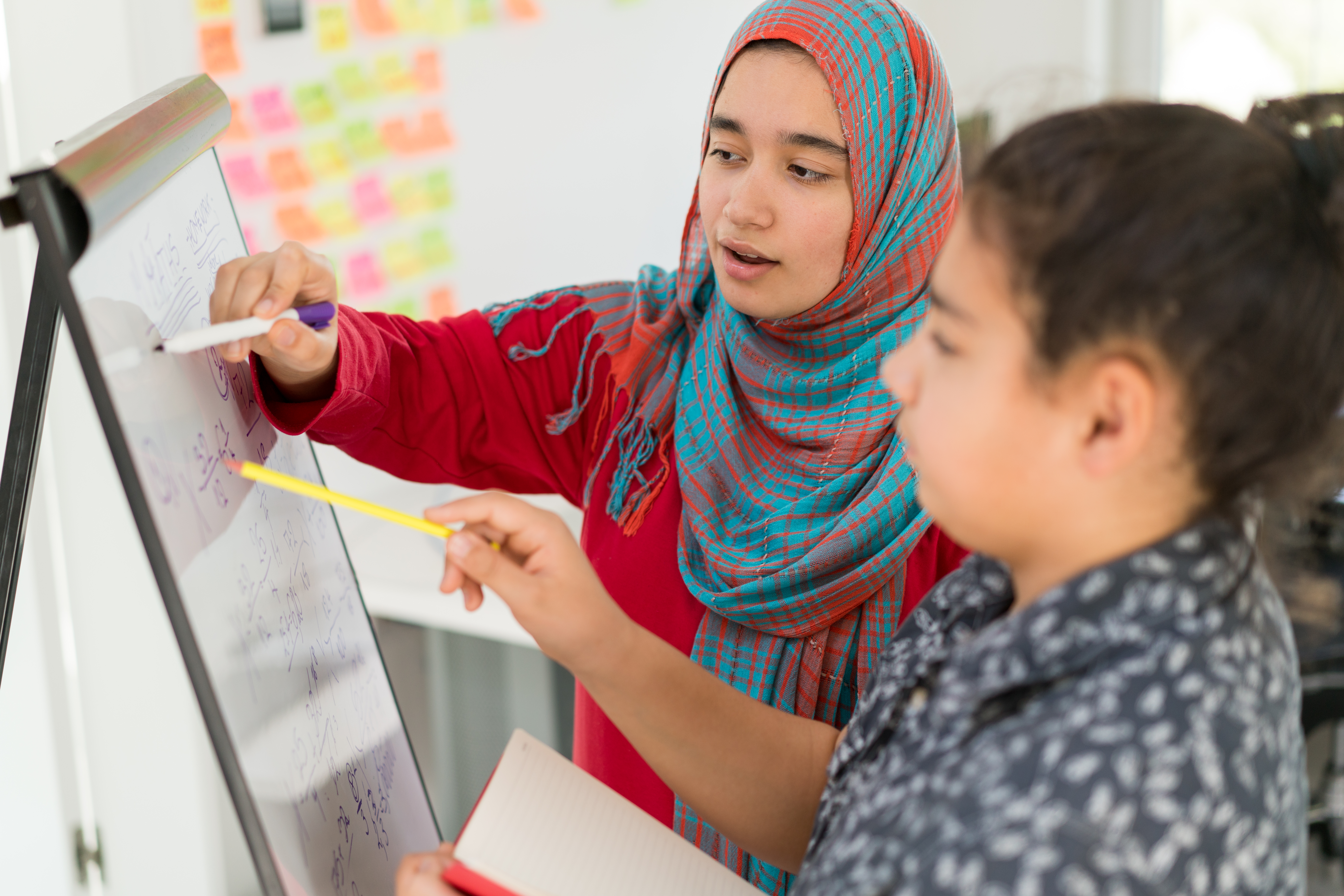In today’s diverse classrooms, teachers face the challenge of meeting the varied needs of their students. Differentiation and scaffolding are two instructional strategies that work together to create inclusive and effective learning environments.
Scaffolding provides temporary support to help students reach their learning goals, while differentiation tailors instruction to meet individual needs. Imagine scaffolding as the grips or blocks that help students climb a wall, while differentiation ensures the wall is the right height for each student’s climbing ability. Supported by research and practice, these approaches improve student engagement, understanding, and achievement.

Understanding Differentiation in Teaching
Differentiation is a teaching method that adapts instruction to accommodate diverse learning styles, abilities, and interests by modifying various aspects of teaching. This includes content, process, product, and learning environment:
• Content: Providing multiple ways for students to explore and understand the subject matter. For example, in a science lesson about the solar system, a teacher might offer plain text with pictures for struggling readers and complex articles for advanced readers.
• Process: Changing how students engage with the content. For example, in a math lesson on fractions, a teacher could offer manipulatives like fraction tiles for hands on learners, while kinesthetic learners might benefit from acting out fraction concepts.
• Product: Allowing students to demonstrate their understanding in numerous ways. Instead of a single standardized test or assignment, students could choose between writing an essay, creating a diagram, or building a model to showcase their understanding.
• Learning Environment: Creating a classroom setup that enhances learning for all students. This could involve having quiet areas for individual study, spaces for group work, and areas where students can move around and be active.

The Role of Scaffolding in Differentiated Instruction
Scaffolding is an instructional technique that provides temporary support to help students achieve learning goals they might not reach independently. In the context of differentiation, scaffolding is essential because it allows teachers to provide personalized support that aligns with each student’s current level of understanding and ability:
• Supportive Structures: Breaking down learning tasks into manageable parts and providing tools, strategies, or guidance to assist students in mastering each component. An example is a teacher providing sentence starters or outlines for writing assignments.
• Tailored Assistance: Personalized in a differentiated classroom. Teachers assess the specific needs of each student or group of students and provide the necessary level of support. For instance, a teacher might provide a graphic organizer to help students brainstorm ideas for a writing assignment.
• Active and Engaged Learning: Encouraging active participation. During a science experiment, a teacher might provide students with a step-by-step procedure guide with pictures to help them follow along and actively participate.
• Feedback and Adjustment: Involving ongoing assessment and feedback. For example, after completing a math worksheet, a teacher might provide students with a rubric outlining the criteria for success, allowing students to self-assess their work and identify areas for improvement.
• Building on Prior Knowledge: Beginning with students’ existing knowledge, leveraging this base to introduce new concepts. This approach makes new learning accessible and effectively connects current information to established schemas, enhancing comprehension and retention.

Research Supports Differentiation and Scaffolding
Research indicates that differentiated instruction can positively impact academic performance, particularly when implemented as a concerted pedagogical practice. Additionally, more students with disabilities engage and participate in classroom activities when differentiation is applied. However, gaps in teachers’ knowledge about how and why to implement differentiation highlight the need for comprehensive professional development and support.
The successful implementation of differentiated instruction requires both materials and psychological support for teachers. Teachers in schools where administrators provide encouragement and resources are more likely to apply differentiation strategies effectively. Furthermore, educators who feel empowered to make instructional decisions in their classroom report higher instances of differentiation.

Differentiation and scaffolding ensure all students, regardless of their starting point, have access to appropriate challenges and supports. This approach helps bridge the achievement gap, providing equitable learning opportunities for all students. Moreover, scaffolding supports students in developing higher order thinking skills, fostering deeper and more personal engagement with the learning materials. By gradually removing support as students gain proficiency, scaffolding also promotes independence and confidence in learning.
The Path to Student Success
Differentiation and scaffolding are essential strategies for the modern K-12 classroom. These approaches ensure that all students, regardless of their skill level, receive the right challenges and support. Differentiation tailors’ instruction to meet individual needs by modifying content, processes, products, and learning environments. This personalized approach fosters deeper student engagement, making learning meaningful and effective.
Meanwhile, scaffolding provides temporary support that guides students through the learning process. As students gain proficiency, these supports are gradually removed, which promotes independence and confidence in their abilities. When used in combination, these strategies help bridge the achievement gap and foster higher order thinking skills, enabling all students to reach their full potential.
